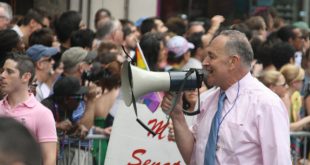 In last week’s third and (thank goodness) final presidential debate, each candidate did an excellent job of presenting convincing arguments for why people shouldn’t vote for the other.
In last week’s third and (thank goodness) final presidential debate, each candidate did an excellent job of presenting convincing arguments for why people shouldn’t vote for the other.
Donald Trump called Hillary Clinton a felon, and Clinton called Trump a traitor. Unfortunately for America, there is plenty of basis for the former charge and less but still disturbing evidence for the latter.
These two may not be the most unpopular pair of major-party presidential nominees in history. James Buchanan and John C. Fremont in 1856 may have been worse, at least judging from their later feckless careers.
But of all the nominee pairs since random sampling polling was invented in 1935, Trump and Clinton certainly win the prize. Majorities of voters look negatively on both and consider each dishonest and untrustworthy. It’s not hard to see why.
How did we end up with such nominees? It’s easy to blame the presidential nominating process, which is widely and correctly regarded as the weakest part of our political system. Perhaps not coincidentally, it is the only part not addressed by the Framers.
The problem is that there’s no way to construct an entirely satisfactory system in a nation with 50 sovereign states and a long history of economic and cultural diversity. Both parties’ earnest efforts over the past four decades, aimed at repairing previous flaws, have only created new ones.
What gave us these two nominees this year was a combination of dynastic politics and celebrity politics. The Clinton candidacy foreclosed serious opposition — and revealed the increasing strength of the Democratic left. The Bush family provided a huge supply of money for a worthy candidate for whom there was insufficient demand.
Much of the $100 million raised for Jeb Bush’s super PAC was spent on deconstructing Marco Rubio, who might have been a stronger Trump opponent than Ted Cruz and would have been a stronger Clinton opponent than Trump.
Meanwhile, Trump’s celebrity gave him some $2 billion worth of free media, leaving little room for exposure of other Republicans. Until Trump clinched the Republican nomination, mainstream media had as little interest in digging up dirt on him as they have now in airing the scandals swirling around Clinton.
The majority of voters who yearn to see Trump lose can take comfort in the national polling that currently shows him 6 points behind Clinton, compared with his being 1 point behind before the first debate. Almost all target state polling confirms that picture.
The smaller majority of voters who yearn to see Clinton lose may take what comfort they can from the three national polls (Los Angeles Times, Rasmussen Reports, Investor’s Business Daily) that show an even race, even though The New York Times’ Nate Cohn has demonstrated the unreliability of the LA Times poll’s sample.
They might take comfort, as well, from the fact that voters in Britain and Colombia voted, contrary to polls, against an overwhelming tide of respectable opinion in referendums on June 23 and Oct. 2. But the British polls weren’t far off, and candidates’ character wasn’t a factor in those contests.
There remains uncertainty about what pollsters have trouble projecting: turnout. Clinton struggles to enthuse blacks, Hispanics and young people. Trump’s talk about rigging elections may discourage conservative turnout.
The choice of these nominees may result in two significant shifts. One is a recoloring of the familiar political map. When Trump was running close to even, he was threatening to win previously safe Democratic states. Clinton is now threatening to win previously safe Republican states. The static polarized partisan lines may be shifting.
The other is the opening of new fissures in both parties. Trump enthusiasts and “never Trump” critics are already embarked on a civil war. Bernie Sanders enthusiasts are understandably furious about what WikiLeaks has revealed that Clinton and top aides have said in emails and speeches.
A Bloomberg poll asked Republicans and Democrats which of several figures should be the face of their party nationally if their nominee loses. A plurality of Democrats, 32 percent, said Hillary Clinton, and 6 percent said Tim Kaine. But 31 percent said Bernie Sanders, and 23 percent said Elizabeth Warren.
Among Republicans, 24 percent said Donald Trump, far below the percentage supporting him against Clinton. But a total of 71 percent picked the more conventional conservative alternatives Mike Pence, Ted Cruz, Paul Ryan and John Kasich.
That’s a crude measure, but it provides an interesting hint of the politics that are just a couple of weeks ahead.
COPYRIGHT 2016 CREATORS.COM
Photo credit: DonkeyHotey (Creative Commons) – Some rights reserved
 Michael Barone, senior political analyst at the Washington Examiner, (www.washingtonexaminer.com), where this article first appeared, is a resident fellow at the American Enterprise Institute, a Fox News Channel contributor and a co-author of “The Almanac of American Politics.”
Michael Barone, senior political analyst at the Washington Examiner, (www.washingtonexaminer.com), where this article first appeared, is a resident fellow at the American Enterprise Institute, a Fox News Channel contributor and a co-author of “The Almanac of American Politics.”
The views expressed in opinion articles are solely those of the author and are not necessarily either shared or endorsed by Black Community News.
 CURE News and Clergy Blog News and Commentary for Christians
CURE News and Clergy Blog News and Commentary for Christians




Americans need only look at the numbers that support/ed Sanders, and the numbers that continue to support a “convicted out of her own mouth” criminal, Clinton, to obtain a crystal ball view of The Good Ship America’s destination! Obviously, these people, purporting to desire either of these two as the next “Leader of the (not so) Free World,” have NO idea what a “banana republic” looks like…. Their “education” may be forthcoming.